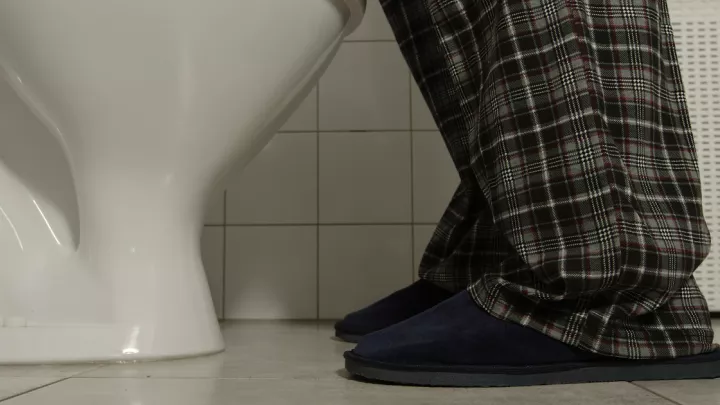Are the neti pot and other nasal rinse devices safe?

When you have a respiratory or sinus infection, sometimes nothing seems to help with the discomfort.
To get relief, some people perform daily nasal rinses using a nasal rinse irrigation device such as a neti pot. Nasal irrigation uses a saltwater solution to flush out the nasal passages, which can help reduce facial pain and clear out mucous.
“A nasal rinse is like chicken soup for the nose,” says Carla Schneider, PA, Nebraska Medicine Department of Otolaryngology. “Not only can it help relieve sinus pressure and clear drainage, but nasal irrigation may also prevent viruses from turning into a bacterial infection and may shorten the duration of an upper respiratory infection.”
To perform nasal irrigation rinses, many people use a neti pot, a ceramic or plastic pot that looks similar to a teapot. The neti pot has been around for centuries, but newer plastic squeeze bottles are also available today that may be even more effective and easier to use.
Recent research from the Centers for Disease Control and Prevention, however, reveals that a very small number of people who perform nasal irrigation may contract a dangerous brain-eating amoeba called the Acanthamoeba. This parasite can potentially cause a serious infection in the eyes, skin, or central nervous system, says Schneider.
“This type of amoeba is not new,” says Schneider. “However, the report showed that rinsing with tap water increases the risk for it.”
While this type of infection is rare (about three to 12 cases are reported annually), there is no simple treatment or remedy. “It has more than an 80% fatality rate and is most often found in those who are immunocompromised,” says Schneider.
Nasal irrigation is still an effective practice for many people, especially those with a severe sinus or upper respiratory infection, for those who get recurrent sinus infections and for those who suffer year-long allergies, says Schneider.
To perform this practice safely and avoid the risk of getting a potentially serious infection, Schneider recommends taking the following precautions,
- Always use distilled water or boil your tap water for one minute before using it for nasal irrigation.
- Wash your nasal irrigation device with soap and hot water after each use.
- At least once a week, clean the device in the dishwasher or put it in the microwave for one minute if it is microwave safe.
- Air-dry your device completely between uses.
- Replace your device every few months.
How to perform a nasal saline irrigation
- Mix a pre-prepared salt packet with distilled or boiled water. Allow water to cool before use. Tuck your chin down and lean over the sink.
- Pour or squeeze half of the solution into your nostril and let it drain out on the other side.
- Repeat on the other nostril.
You can purchase or make your own salt packets. To make your own, mix together:
- 8 ounces of distilled or boiled water.
- 1 teaspoon of salt.
- 1 teaspoon of baking soda.
- Shake to mix well.
It should be noted that Acanthamoeba can be contracted in other ways, including through the eyes via contact lens wear and skin infections, explains Schneider.
Symptoms of an Acanthamoeba infection include:
- Changes in mental status.
- Loss of coordination.
- Fever.
- Muscular weakness or partial paralysis affecting one side of the body.
- Double vision.
- Sensitivity to light.
- Other neurological problems.
If you experience any of these symptoms, you should seek care urgently, says Schneider.
The Nebraska Medicine ear, nose and throat team treats patients of all ages for various conditions. Call 800.922.0000 to make an appointment today.







